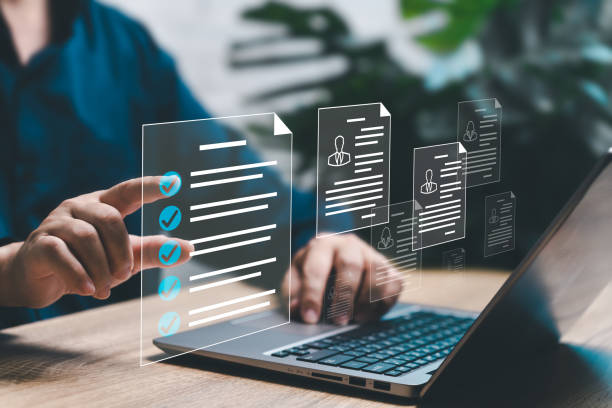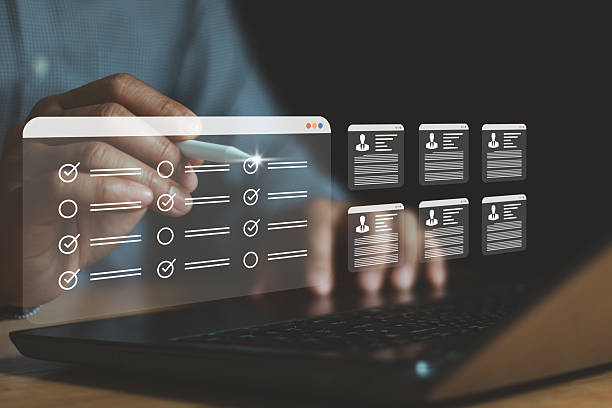What is On-Page SEO and Why is it Important?
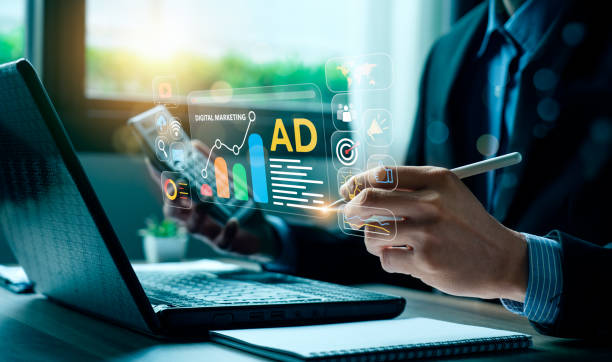
On-Page SEO refers to a set of actions you take within your website to improve your site’s ranking in search results.
These actions include optimizing content, HTML code, and website structure.
The importance of On-Page SEO lies in the fact that it helps search engines better understand the subject and quality of your content, and as a result, displays your site in higher rankings.
On-Page SEO is not only limited to optimizing keywords, but also includes user experience, site speed, and responsive design.
In short, On-Page SEO means providing the best conditions for search engines and users to easily find and use your content.
By improving On-Page SEO, you increase your site’s organic traffic and have more opportunities to attract customers and increase sales.
For more information about search engine optimization, you can visit the Wikipedia page.
In today’s competitive world, #SEO is a necessity for any business that wants to succeed online.
On-Page SEO, as one of the main pillars of SEO, plays an important role in determining your site’s position in search results.
By following the principles of On-Page SEO, you can optimize your site for search engines and attract more organic traffic.
Are you tired of your company’s website not being seen as it should be, and losing potential customers? Solve this problem forever with professional and effective website design by Rasaweb!
✅ Increased brand credibility and customer trust
✅ Attracting targeted sales leads
⚡ Contact us now for a free consultation!
Keyword Research, a Foundation for On-Page SEO
![]()
Keyword research is the first step in On-Page SEO.
You need to find the words that your audience uses to search for your products or services.
There are various tools for this, such as Google Keyword Planner and Ahrefs.
After identifying keywords, you should use them naturally in your content.
Overusing keywords (Keyword Stuffing) can damage your site’s ranking.
For example, if you have an online clothing store, your keywords could include “buy women’s clothing,” “buy men’s clothing,” “price of evening dresses,” and so on.
Try to consider long-tail keywords as well, as these words usually have less competition and can drive more targeted traffic to your site.
Long-tail keywords are phrases that usually consist of three or more words, such as “buy women’s plus size evening dress.”
Another important point in keyword research is to check competitors.
See what words your competitors use and try to get ideas from them.
Of course, you shouldn’t just imitate competitors, but try to find words that are more suitable for your business.
On-Page SEO without keyword research is like building a house without a map.
You need to know what your audience is looking for so you can produce content that meets their needs.
Optimizing Titles and Meta Descriptions
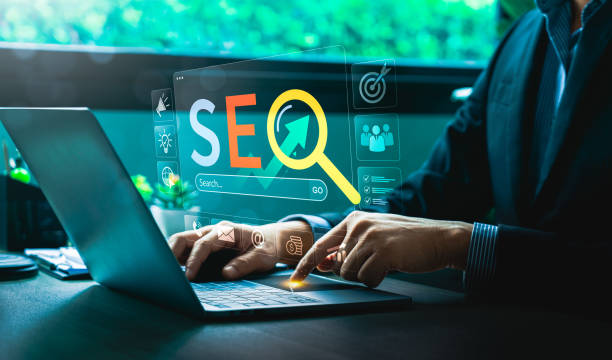
Title Tags and Meta Descriptions play a very important role in On-Page SEO.
Titles are displayed in search results, and meta descriptions provide a summary of the page’s content.
Both should be attractive and relevant to the content of the page.
Titles should be a maximum of 60 characters and meta descriptions should be a maximum of 160 characters.
Using keywords in titles and meta descriptions can help improve your site’s ranking, but don’t overdo it.
Titles should be written in a way that encourages users to click.
Use attractive and stimulating keywords.
Meta descriptions should tell users what they will find on your page.
Use clear and concise sentences and avoid repetition.
The title and meta description should be unique for each page.
Using duplicate titles and meta descriptions can damage your site’s ranking.
For example, if your page is about “buying sports shoes,” your title could be “Buy Online Sports Shoes at the Best Price | Store…” and the meta description could be “Find all kinds of men’s and women’s sports shoes with reputable brands and reasonable prices in our store.
Fast delivery to all parts of the country.”
On-Page SEO without optimizing titles and meta descriptions is like driving a car with flat tires.
You cannot reach your destination with the necessary speed and efficiency.
Optimizing Page Content
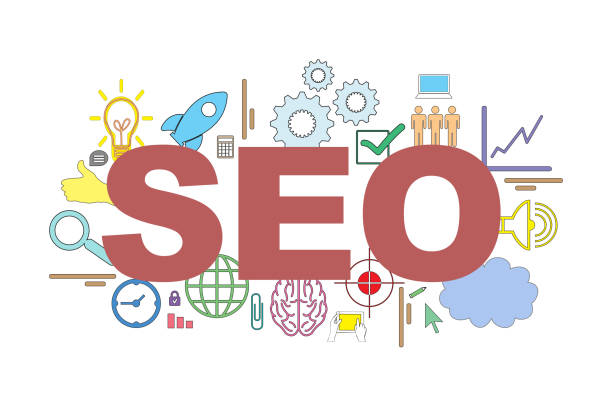
High-quality content is the king of On-Page SEO.
Your content should be valuable, engaging, and relevant to the needs of your audience.
Use keywords naturally in your content, but avoid overuse.
Update your content regularly so that search engines know your site is active.
Use images and videos to make your content more engaging.
Your content should answer your audience’s questions and solve their problems.
Try to create content that is distinct from other sites.
Use titles and subtitles to organize your content to make it easier to read.
Optimize your content for mobile devices, as most users today access the Internet via mobile.
On-Page SEO without high-quality content is like cooking a meal without ingredients.
You can’t prepare a delicious and nutritious meal.
Another important point in content optimization is attention to readability.
Use short, simple sentences and avoid complex and technical words.
Correct your content using text editor tools to avoid spelling and grammatical errors.
On-Page SEO is successful when your content is both attractive and useful for search engines and users.
Are you dissatisfied with the low conversion rate of visitors to customers on your online store?
Solve this problem forever with professional online store website design by Rasaweb!
✅ Increase visitor to customer conversion rate
✅ Create an excellent user experience and build customer trust
⚡ Get a free consultation
Optimizing Images

Images play an important role in the attractiveness and efficiency of your website.
But unoptimized images can slow down your site and affect user experience.
To optimize images, you need to reduce their size and use appropriate formats.
Also, you should write Alt Text for your images.
Alt Text helps search engines understand the subject of the image and is displayed to users if the image does not load.
On-Page SEO includes optimizing all elements of the site, not just text.
To reduce the size of images, you can use online tools like TinyPNG and ImageOptim.
JPEG and PNG formats are suitable for web images.
The JPEG format is suitable for images with many colors and the PNG format is suitable for images with many details.
Alt Text should be descriptive and relevant to the content of the image.
Use keywords naturally in Alt Text.
For example, if your image is a photo of a leather bag, your Alt Text could be “Handmade brown leather bag.”
Another important point in image optimization is to use a suitable file name.
Use descriptive file names that are relevant to the content of the image.
Instead of default file names like “IMG_1234.jpg,” use descriptive file names like “leather-bag-handmade.jpg.”
On-Page SEO pays attention to small details as well.
URL Structure and Internal Links

Your site’s URL structure should be simple, logical, and readable.
Use keywords in the URL, but avoid overuse.
URLs should be short and understandable.
Internal Links are links that connect different pages of your site.
Internal links help search engines better understand your site structure and help users easily navigate your site.
On-Page SEO is stronger with a proper URL structure and internal links.
For example, if your page is about “SEO training,” your URL could be “example.com/seo-training.”
Try to avoid using numbers and special characters in your URL.
Internal links should be relevant to the content of the page.
Use descriptive Anchor Text for internal links.
Anchor Text is text that links to another page.
For example, if you want to link to the “Off-Page SEO” page, your Anchor Text could be “Off-Page SEO.”
Another important point in creating internal links is to pay attention to the number of links.
Avoid creating too many links on one page.
On-Page SEO with appropriate internal links is like a strong communication network that connects different pages of your site.
Optimizing Site Speed

Site speed is one of the important factors in ranking your site in search results.
Users expect a site to load quickly, and if your site is slow, users may leave it and go to another site.
To optimize site speed, you need to reduce the size of images, use a Cache system, and use a high-quality Hosting.
On-Page SEO with high speed provides a better user experience.
To check your site’s speed, you can use online tools like Google PageSpeed Insights and GTmetrix.
These tools will show you which parts of your site need improvement.
The Cache system is a mechanism that stores your site’s information in memory so that it loads faster in subsequent visits.
For example, if you are using the WordPress content management system, you can use Cache plugins like WP Rocket and LiteSpeed Cache.
Another important point in optimizing site speed is the use of a Content Delivery Network (CDN).
A CDN is a network of servers that are scattered around the world and deliver the content of your site to users who are near these servers.
This makes your site load faster for users around the world.
On-Page SEO with optimized speed attracts the satisfaction of users and search engines.
Responsive Design
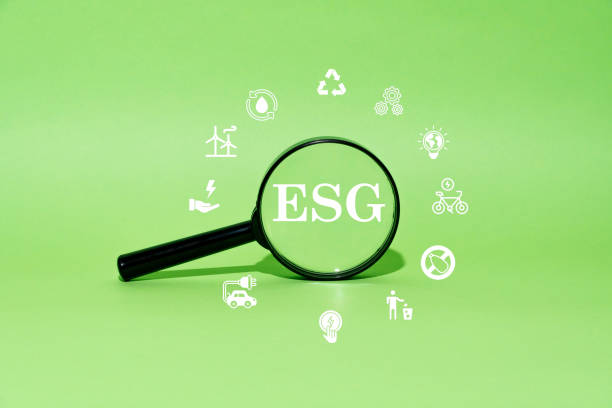
Responsive design means that your site should automatically adapt to the screen size of different devices (such as mobile, tablet, and computer).
Today, most users access the Internet via mobile, and if your site is not optimized for mobile, users may leave it and go to another site.
Google also gives a better ranking to sites that have responsive design.
On-Page SEO without responsive design is ignoring a large part of the audience.
To check if your site has responsive design, you can use Google’s Mobile-Friendly Test tool.
This tool will show you how your site is displayed on mobile devices and what problems it has.
If you are using the WordPress content management system, you can use responsive themes.
Responsive themes automatically adapt to the screen size of different devices.
Another important point in responsive design is to pay attention to the site’s loading speed on mobile devices.
Your site should load quickly on mobile devices because mobile users are usually not patient.
On-Page SEO with responsive design makes it easier for all users to access your site.
Do you have an online store site but your sales are not as expected? Rasaweb solves your problem forever by designing professional online store sites!
✅ Significant increase in conversion rate and sales
✅ Unique user experience for your customers
⚡ Click to get a free consultation with Rasaweb!
Optimizing Schema Markup

Schema Markup is a code that helps search engines better understand the content of your site.
By using Schema Markup, you can provide more information about your products, services, articles, and events to search engines.
This information can be displayed in search results and increase your site’s click-through rate (CTR).
On-Page SEO with Schema Markup gives a better view to search engines.
For example, if you have a restaurant, you can use Schema Markup to provide information such as the restaurant’s name, address, phone number, opening hours, and menu to search engines.
This information can be displayed in search results and help users easily find your restaurant.
To use Schema Markup, you can use online tools like Schema Markup Generator.
These tools help you easily generate Schema Markup code.
After generating the Schema Markup code, you must add it to your site’s HTML code.
Another important point in using Schema Markup is to pay attention to the accuracy of the information.
The information you provide in Schema Markup should be accurate and up-to-date.
On-Page SEO with Schema Markup provides valuable information to search engines.
Monitoring and Measuring Results

On-Page SEO is an ongoing process, and you should regularly monitor and measure the results of your efforts.
To do this, you can use various tools such as Google Analytics and Google Search Console.
Google Analytics shows you how many users visit your site, which pages they visit, and how long they stay on your site.
Google Search Console shows you how your site performs in search results, which keywords drive traffic, and what problems exist on your site.
Using this information, you can identify the strengths and weaknesses of your On-Page SEO and adjust your strategy accordingly.
For example, if you find that a particular page is not attracting a lot of traffic, you can improve its content or choose more appropriate keywords for it.
Another important point in monitoring and measuring results is to pay attention to changes in Google’s algorithms.
Google is constantly changing its algorithms, and if you are not aware of these changes, your site’s ranking in search results may decrease.
On-Page SEO with regular monitoring helps you to always be at the top.
Frequently Asked Questions
| Question | Answer |
|---|---|
| What is On-page SEO? | On-page SEO refers to the set of actions taken within your website to improve its ranking in search engine results. This includes optimizing content, site structure, and HTML code. |
| Why is On-page SEO important? | On-page SEO helps search engines understand the content of your page and determine whether your content is relevant to searchers. This is the foundation of any successful SEO strategy. |
| What are the key elements of On-page SEO? | The key elements include page title (Title Tag), meta description (Meta Description), keyword usage, image optimization, heading structure (H1, H2, …), internal linking, and content quality. |
| How do I optimize the page title (Title Tag)? | The page title should include the main keyword, be attractive and encourage clicks, and be between 50 and 60 characters long (or a suitable number of pixels) to be fully displayed in search results. |
| What role does the meta description (Meta Description) play in On-page SEO? | The meta description is a summary of the page content that is displayed below the title in search results. Although it does not directly affect ranking, it helps SEO by increasing the click-through rate (CTR). |
| What is the importance of using a heading structure (H1, H2, H3) in On-page SEO? | Headings structure the page content and make it easier to read. H1 is usually the main title of the page and should include the keyword. H2 and H3 are used to organize sub-sections and help search engines understand the hierarchy of content. |
| How do I effectively use keywords in content? | Keywords should be used naturally and logically throughout the content, including the introduction, body, and conclusion. Avoid keyword stuffing. |
| What steps are involved in optimizing images for On-page SEO? | It involves compressing images to reduce size, using descriptive file names, adding appropriate alternative text (Alt Text), and optimizing the image title and description. Alt Text is critical for accessibility and helping search engines understand the image content. |
| What is Internal Linking and what are its benefits? | Internal linking means creating links from one page on your website to another page on the same website. This helps users to easily navigate your site, distributes page authority across the site, and helps search engines better understand your site structure. |
| What is the importance of content quality in On-page SEO? | High-quality content that is accurate, comprehensive, and valuable to users is the cornerstone of On-page SEO. Search engines prefer content that meets the needs of users. High-quality content leads to longer dwell time and lower bounce rate, which are positive SEO signals. |
And other services of Rasa Web Advertising Agency in the field of advertising
Smart Sales Automation: A new service for increasing digital branding by customizing the user experience.
Smart Social Media: A new service to increase customer behavior analysis through intelligent data analysis.
Smart UI/UX: A fast and efficient solution for attracting customers by focusing on attractive user interface design.
Smart Brand Identity: A creative platform to improve click-through rates with attractive user interface design.
Smart Google Ads: Designed for businesses looking to analyze customer behavior through marketing automation.
And more than hundreds of other services in the field of internet advertising, advertising consulting and organizational solutions
Internet Advertising | Advertising Strategy | Advertorial
Resources
Ahrefs’ Comprehensive Guide to On-Page SEO
,Semrush’s On-Page SEO Tutorial
,On-Page Optimization in SEO Moz
,SEO On Page SEJ
? Are you ready to transform your business in the digital world? Rasaweb Afarin Digital Marketing Agency, specializing in professional online store website design, SEO and online brand promotion, paves the way for your success.
📍 Tehran, Mirdamad Street, next to the Central Bank, South Kazerun Alley, Ramin Alley No. 6


